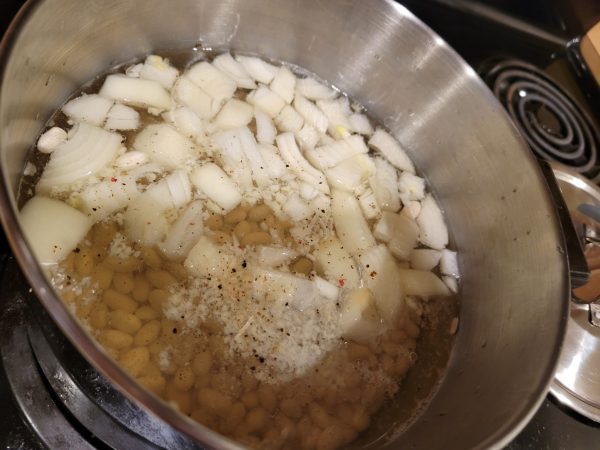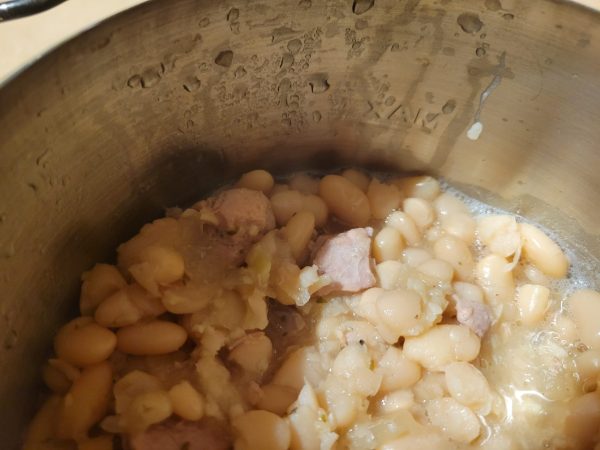Civil War Cooking: A Tale of a Colorbearer and His Army Beans
Many Civil War regimental histories include overviews or anecdotes about the food the soldier ate, complained about, or tried to cook. The 14th New Hampshire Infantry veteran writer followed this trend, including several pages about food and the convenience of Virginia fence rails for cooking fires.
The regiment mustered in September 1862 and then spent time in the Defenses of Washington until journeying to Louisiana in March 1864. Part of the XIX Corps, the regiment returned to Virginia and joined the Army of the Shenandoah for Sheridan’s Autumn 1864 Valley Campaign. The regiment fought at the third battle of Winchester on September 19, 1864, which was there first combat experience. Then the Union army pushed further south. The Confederates took a defensive posture at Fisher’s Hill, and Sheridan prepared to attack the high ground on September 22, 1864. While the VIII Corps attacked the Confederate’s left flank, at the opposite end of the battle lines the XIX Corps spent a good portion of the day waiting and skirmishing. When Grover’s brigade did attack, dinner got spoiled for one fellow in the 14th New Hampshire.
If baked beans are an exponent of culture at the Hub of the Universe, stewed beans were the concomitant of patriotism and the physical basis of bravery. Beans were a strong point the valley commissariat, and the men clung to their stews with touch tenacity. At the battle of Fisher’s Hill the dish of culture and commons was intimately connected with the honor of the flag. The color-sergeant of the Fourteenth was devoted to two objects, – his country and his beans. Added to a native courage, he brought to the support of the stars and stripes that acquired, invincible steadiness always secured by the generous diet of stewed beans, garnished by a sufficiency of vitriol vinegar.
During the entire afternoon, while the preparations were going on the brilliant coup d’etat in which the battle culminated, our hero of the colors was cooking his ration of beans, and had just set him down to his most elegant stew, when “Fall in!” – “Forward!” were the commands which dissipated his anticipations. He weighed his duty against his beans, and was in doubt. It was the best quart stew he had cooked for a month. He would not desert his flag; he could not abandon his beans. As a dernier [last] resort, he tied his steaming, soot black pail to his belt; the regiment filed out of the woods, formed line of battle, and advanced to the charge. The color-sergeant was observed to keep his eyes on the enemy and – that dangling pail; the track of the Fourteenth was strewn and marked, not so much by corpses as by beans. Fisher’s Hill was won, but an excellent bean-stew was lost.[1]
So far, I have not identified the name of the flag bearer. It might have been Color-Sergeant Howard, who carried the United States flag at the battle of Third Winchester a few days before Fisher’s Hill. Or maybe it was someone else carrying the state/regimental flag? (The regiment had lost several color-bearers and color-company guards during Third Winchester, including Corporal Charles A. Ball who was the first to fall in combat, died of his injuries, and is buried in a marked grave in Winchester National Cemetery.)
Whoever the resourceful flag bearer was, his story made me smile. When I realized I had invited a few friends over for dinner on September 22, it seemed only appropriate to make it a history dinner and cook some stewed beans on the anniversary of Fishers Hill.
After pre-soaking some white beans, I put them on the stove to simmer slowly.
The flag-bearer might have added salt pork from rations to his beans, but I’ve found quite a few accounts of other regiments getting fresh pork during that period in the Valley Campaign, so I decided to added chunks of pan-seared, fresh pork to the simmering stew. And a little bit of onion, salt, pepper, and a dash of white vinegar which would improve the flavor and seemed plausible ingredients that a soldier might have had.
We did not hurry to an attack and lose the dinner, but we all agreed that must have been sad occurrence to lose such an excellent bean stew.
Patriotism and sacrifice took many forms during the Civil War, and while losing a good meal may seem a slight loss, this account entered the regimental history as a piece of humor, reminder of dedication, and example of the challenge of preparing good food during campaigns.
Sources
“14th New Hampshire” – National Park Service Battle Units https://www.nps.gov/civilwar/search-battle-units-detail.htm?battleUnitCode=UNH0014RI
Francis H. Buffum, A memorial of the Great Rebellion: being a history of the Fourteenth Regiment New-Hampshire Volunteers, covering its three years of service, with original sketches of army life. 1862-1865 (1882). Accessed through Google Books.




